#dyna blue
Text
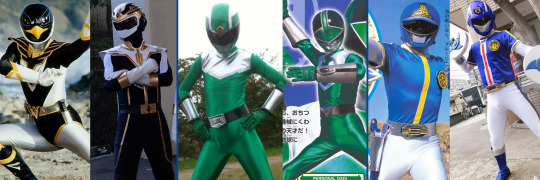
Black Condor from Choujin Sentai Jetman (1991).
Time Green from Mirai Sentai Timeranger (2000). / Green ranger from Power Rangers Time Force (2001). (Male character played by a woman.)
Dyna Blue from Kagaku Sentai Dynaman (1983).
#sentai#super sentai#male heroes#jetman#black condor#timeranger#time green#time force#dynaman#dyna blue#sentai black#sentai green#sentai blue#giga#toei#heisei era tokusatsu#showa era tokusatsu#power rangers#1980's tokusatsu#1990's tokusatsu#2000's tokusatsu
8 notes
·
View notes
Text
Cinematic
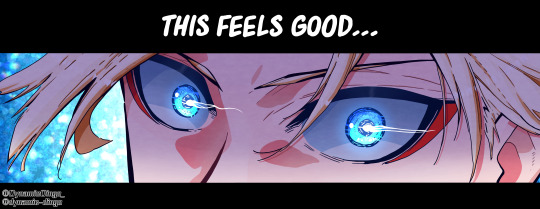
I saw this and went "That's my new header" so I colored it. I debated a version with his hair dyed. I adore it.
#Dyna colors Manga#Dingo colors Manga#Blue Lock#Kaiser#Michael Kaiser#Blue Lock Kaiser#Managed to do it in a day due to how little lines there were#Or maybe it was just being in the zone#Probably both#Blue Lock Spoilers
133 notes
·
View notes
Text

Blue Beetle and the All-Star Squadron & Freedom Fighters by Jerry Ordway
#blue beetle#dan garrett#liberty belle#flash#sandman#sandy the golden boy#black condor#green lantern#alan scott#the guardian#hawkgirl#t n t#dan the dyna mite#human bomb#cherry bomb#sparky#jerry ordway#dc comics#modern age#james robinson#paula sevenberger#all star squadron#freedom fighters
49 notes
·
View notes
Note
referring to the small guy, big guy reblog post:
STARSTRUCK AND DYNA BLADE THAT’S WHO!!! 🦅🦅(eagle emoji)
you know what anon? sure. why the fuck not. i'm not a coward. here you go.
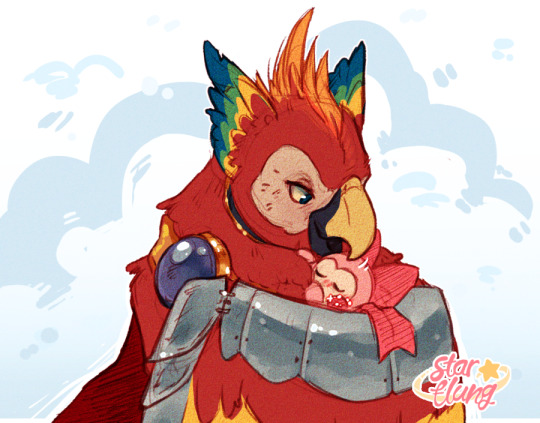
#starstruck is probably Bird Chick sized to dyna blade so i think this would not be a stretch!#she's not a fluffy kind of waddle dee though; so she's probably not super easy to preen!#starstruck however would be having a great time. very soft spot to nap!! fluffy!! yay!#also i know you put the eagle emojis but consider... scarlet macaw. if it weren't for the blues in her design i'd have said greenwing tho#i appreciate that you engaged with the post!!! thank you. this was silly but you know what it was fun!!#my art#asks#starstruck dee#dyna blade
116 notes
·
View notes
Text
showa sentai should be watched in reverse order so you can spend the whole time pointing out all the times a guy was a random background character before they finally gave them a proper role
#if you watched it in release order you'd miss so many lil pre-cameos#me pointing at the jogger on screen for 0.5 of a second in that one denziman episode: omg its dyna blue#also its funny if kemp is the first time you meet Yutaka Hirose
11 notes
·
View notes
Text
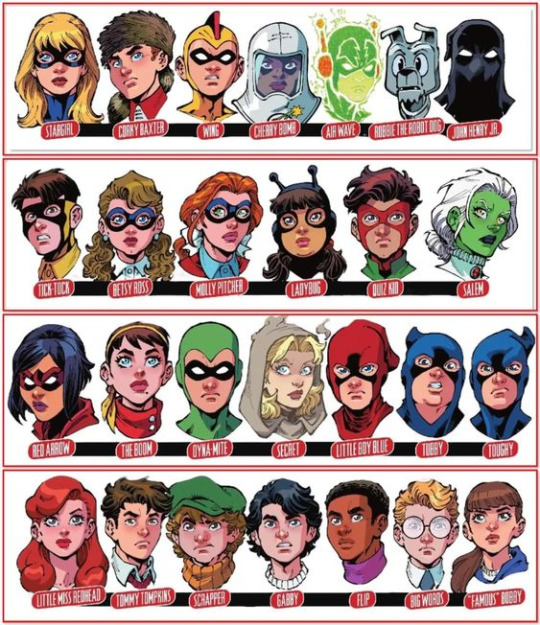
#stargirl#corky baxter#wing#cherry bomb#air wave#robbie the robot dog#john henry jr#tick tock#betsy ross#molly pitcher#ladybug#quiz kid#salem#red arrow#boom#dyna-mite#secret#little boy blue#tubby#toughy#little miss redhead#tommy thompkins#scrapper#gabby#flip#big words#famous bobby
3 notes
·
View notes
Text
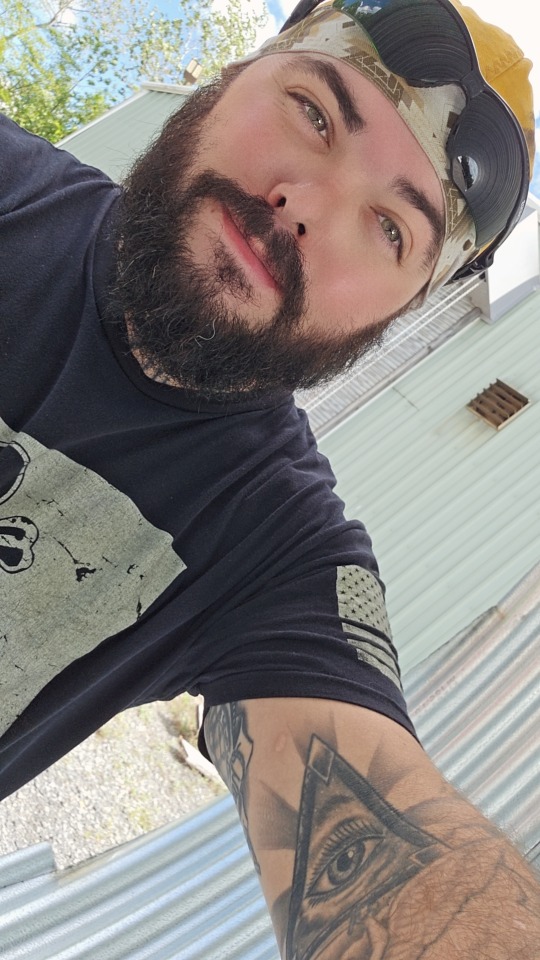
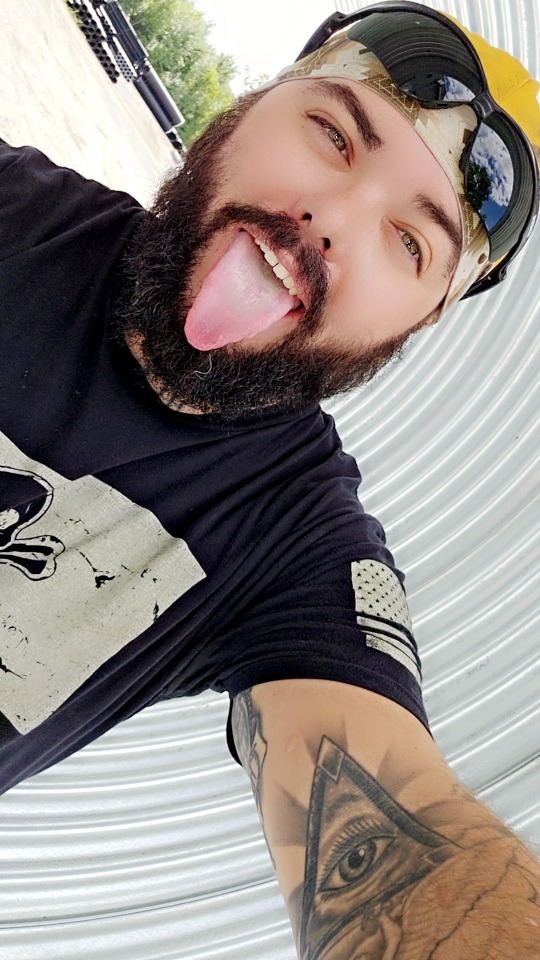
#me#adklife#adirondacks#fatguysmatter#hd#adkmountains#mill life#streetbob#harleydavidson#dyna#weldshop#welder#blue collar
6 notes
·
View notes
Text
No matter what Tucker Carlson* told Joe Rogan, everything can be explained as advanced technology and black projects and can find its roots in post WW2 Germany.
*is Tucker playing a role again, this time for the disclosure narrative?
#bureau of technology control#blue Gemini#u-234#secret space program#ho229#a-12#operation Argus#X-15#dyna-soar#space plane#klystron#die glocke#nick cook
1 note
·
View note
Text
youtube
DMBQ - WFMU
0 notes
Text
Ibanez Revitalizes AZ Premium Line for NAMM 2024
Ibanez is set to make waves at NAMM 2024 with its latest additions to the AZ Premium series. This update not only introduces three stunning new finishes but also marks the return of an upgraded HSS configuration featuring Seymour Duncan pickups.
AZ Premium
The highlight of this release is the AZ24P1QM model, sporting a captivating Deep Ocean Blonde finish. It stands out with its HSS…

View On WordPress
#2024#7-string#AZ Premium#AZ24P1QM#AZ42P1#basswood#Deep Ocean Blonde#Dimarzio#DiMarzio Air Norton#Dragon Eye Burst#dyna-MIX9#Hyperion#Hyperion 7#Ibanez#Ibanez AZ Premium#Ibanez Revitalizes AZ Premium#NAMM#NAMM 2024#Prussian Blue Metallic#quilted maple#rosewood#Seymour Duncan#Seymour Duncan Hyperion#The Tone Zone#True Velvet#Twilight Blue Burst
0 notes
Text
Ghost Month Special: Heibai Wuchang
Today is the middle of Lunar Seventh Month, a.k.a. Zhongyuan Festival, and I feel like there can't be a more appropriate day to do a deep dive on my favorite ghost cops, a.k.a. the Black and White Impermanences, a.k.a. Seventh and Eighth Master, a.k.a. Tua Di Ya Pek, a.k.a. Xie Bi'an & Fan Wujiu.

Now, I've talked briefly about them in my Chinese Underworld post, and if you watch C-dramas or play certain Chinese games, you might have seen these two + learned a few things about them already. But for those who haven't, here's the five-minute summary:
-they are (one variant of ) Chinese psychopomps, who show up to take the souls of the deceased to the Underworld.
-they are also ghost cops, who go after troublesome ghosts that are disturbing the living.
-both wear tall hats with four characters on it (which also varied), as well as nearly identical black and white robes.
-for their Hokkien, Taiwanese and SEA versions, there's a significant height difference between the two; the white-robed one is tall and skinny, while the black-robed one is short and stout.
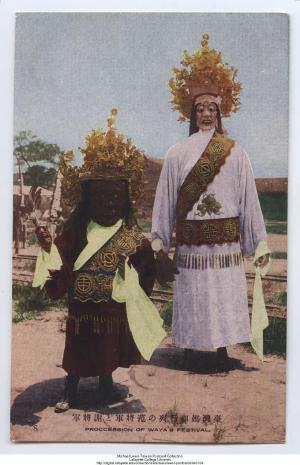
-the White Impermanence is often depicted with his tongue hanging out of his mouth (reminiscent of those who died by hanging) and a more cheerful expression, while the Black Impermanence is dark/blue-faced (reminiscent of death by drowning) and relatively more grim and fierce.
-the White Impermanence is also worshipped as a god of wealth by some.
However, outside of these bullet points, their tales and trajectory of development are a fascinating rabbit hole. I'd call them thorough folk gods, who evolved out of the greater existing character archetype of "ghost bureaucrats fetching people to the Underworld" and became their own unique characters almost entirely through folklore and oral legends.
So, without further ado, let's dive in.
Impermanence
The Great Spectre of Impermanence could arrive unexpectedly. (无常大鬼,不期而到)
——Sutra of Ksitigarbha's Fundamental Vows
To start talking about these two, we need to go into the general category of beings they separated out of later: Underworld officials.
Some conceptions of those petty ghost bureaucrats that mirrored living ones already existed in the Han dynasty; in burial goods and "grave scripts", there were paperwork dedicated to those officials, who were supposed to keep track of the Dead People Belongings List and maintain the segregation between the dead and the living.
Their characterization would get expanded a lot as time went on, in Northern-Southern dynasty and Tang legends, but this isn't an article about the ghost officials as a whole.
We are still tracing the origins of two specific ones, and to do that, we have to start with etymology——the "Wuchang" in their names.
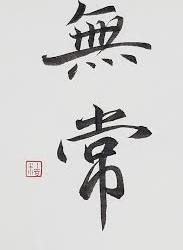
It is the translation of the Buddhist concept of "Anitya", referring to the impermanence of everything, which is always changing and dying and being reborn, with no constant to be found.
Yeah, you can see why a word describing the fleeting nature of life might eventually become associated with death and native psychopomps at some point in the Northern-Southern dynasty.
In the 39 chapter translation of the Dhammapada (interlaced with additional parables) by Fa Ju and Fa Li, the "Killing Spectre of Impermanence" (无常杀鬼) was first mentioned in the "On Impermanence" (无常品) chapter.
Another name for this grim-reaper-esque figure was "The Great Spectre of Impermanence", which appears in the quote at the beginning.
It appeared earlier than Ksitigarbha's Sutra, though: in another Northern-Southern dynasty translation of the Sutra of Golden Light, a Great Spectre of Impermanence was mentioned as this scary being that swallowed a king's younger son up whole.
By the Tang dynasty, the Spectre of Impermanence had appeared in both poetry and Buddhist text collections, as a generic name for the ghost that came to get you when you die.
However, the name wasn't exactly common or widespread, as made evident by all the N & S. dynasty and Tang legends about ghost bureaucrats where they were just referred to as, well, ghost bureaucrats.
Similarly, the Scripture on the Ten Kings doesn't mention anything about a Spectre of Impermanence. Instead, the second variant of the sutra says there are 3 ghosts working under King Yama——the "Soul-seizing Ghost" (夺魂鬼), "Essence-seizing Ghost" (夺精鬼), and "Spirit-binding Ghost" (缚魄鬼), responsible for dragging souls away in chains to the tree near the Underworld entrance pass.
(Their names might have corresponded to the idea of the Three Souls, each grabbing one of them, or the alternate division of Hun-Po plus the "vital force/essence".)
Right after that, however, they mentioned two demonic-looking birds sitting on the tree, one of which was named the "Bird of Impermanence", who would angrily scold and torment the dead for their misdeeds.
In this text, whatever the birds were, they were seen as a separate thing from the 3 ghosts that brought the souls of the dead to the Underworld entrance.
(A brief tangent about the 2 variants of the Ten Kings Scripture: the first could be found in the Dunhuang manuscripts, its name was 佛说预修十王生七经, and, as Teiser's translation of the scripture at the end of his academic book has showned, didn't have the 3 ghosts or the birds.)
(The variant mentioned above is 地藏菩萨发心因缘十王经, which is likely a Song dynasty Japanese apocrypha based on the first variant.)
Buddy Ghost Cops
When the ghostly officials of the Tang legends showed up, they could be alone, in pairs or in groups.
It was only in the Song-Yuan era that the idea of ghost cops showing up in pairs began to populate, and the first mention of the "Two Spectres of Impermanence" appeared in Vol. 3 of the Song dynasty 随隐漫录.
However, even without the word "Impermanence" attached, in various Song texts, the idea of there being 2 ghosts coming to get you instead of a single one or a group had already showed up with more frequency than before.
Come Ming dynasty, the Two Spectres of Impermanence got even more notable mentions in vernacular novels: a descriptive poem in Chapter 115 of Water Margins brings them up alongside the "Generals of the Five Paths" (五道将军), another native Underworld deity that showed up in Tang novels.
Plum in the Golden Vase, a.k.a. "that one Ming classic novel that often got censored and un-classic-ed because of its graphic sexual content", also has a folk Precious Scroll singing session (a story within a story, basically) that mentioned them.
In this story, King Yama sent a pair of "Impermanence Spectres" after Lady Huang, the protagonist of the scroll, who were also referred to as "Divine Boys/Acolytes of Good and Evil".
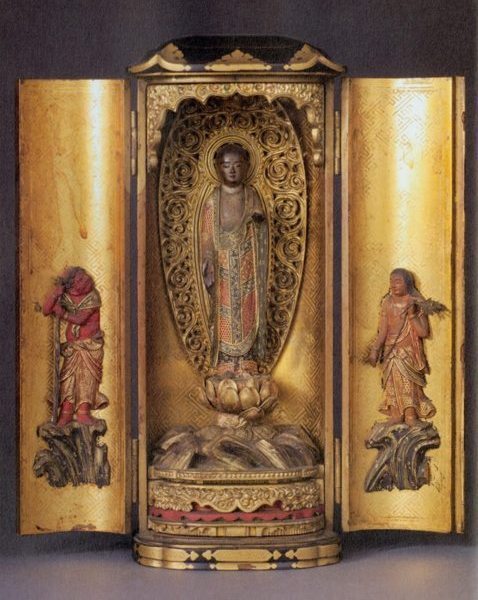
Now, the Boy-Acolytes of Good and Evil (善恶童子) were a pair of existing Underworld deities that had appeared in Dunhuang manuscripts and Ksitigarbha-themed artworks, responsible for recording the good and bad deeds of people respectively.
Their first mention was in the Tang translation of Surangama Sutra, and according to the second variant of the Ten Kings Scripture, the one recording bad deeds was said to look like a Raksha, while the one responsible for good deeds just looked like a regular divine acolyte.
Plum in the Golden Vase might have briefly aluded to that quirk too, in the story-within-a-story, where it was said that "Good people are welcomed by the acolyte(s), while bad people get the Yaksha(s)".
In the earlier Song dynasty compendium, Yijian Zhi, there are also mentions of two kids leading a fortunate guy's soul out of the Underworld, as well as showing up to inform some guy's wife that her days were numbered.
The second story is kinda funny, because after she had pretty much rolled over and accepted her fate, the two kids suddenly returned and were like "Excuse me, was Zhao your maiden name, or your husband's?"
Upon being informed that it was the latter case, they were like "Dangit, almost got the wrong person." Immediately after they left, another woman in the neighborhood whose surname was actually Zhao died.
Both stories do not use the specific name of "Acolytes of Good & Evil" for them, though, nor are they described as recorders of good and evil deeds.
For all I know, these two kids could be just like the pair of "young boys in blue robes" (青衣童子) who led Taizong into the Ghost Gate and the Underworld proper in JTTW Chapter 11: generic ghost workers.
But in Plum in the Golden Vase at least, they seemed to have been absorbed into the larger category of the Impermanence Ghosts, even though the Impermanence Ghosts still weren't their own characters yet, or gained any iconic uniforms.
Rather, it's more that 1) the catch-all name of "Impermanence" has become somewhat widespread for the generic ghost cops, though not yet universal, and 2) the Underworld apparently has a buddy-cop system in place now, where there had to be two ghostly officials for every newly dead person.
Psychopomp Outsourcing
In the late Ming and Qing dynasty, we got another twist on the Wuchang thing: Zou Wuchang, literally "Walk as Impermanences".
I've talked before about the early version of Taizong's trip to the Underworld, where Cui Jue/Ziyu, instead of being posthumously made a ghost judge, was a living official working part-time for the Underworld.
Well, Zou Wuchang is similar, but less prestigious, and you don't get paid either. The Underworld is short of hands (somehow), so they just grab a random living person and be like "Go fetch dead people for us."
The earliest mention of such a tradition in the Ming dynasty 语怪 placed the custom in Fengdu, the famous "ghost city" of Sichuan.
According to the text, when someone's soul was yanked off its streets to work as part-time psychopomps, they just fainted on the spot, and would revive after a few hours or overnight. The phenomenon was so common, the locals weren't even shocked, nor bothered getting them any medical attention.
Yuewei Caotang Biji goes further into the rationales of why Underworld needed those living conscripts. Apparently, all the living people clustered around a sickbed created a blazing aura of Yang, which certain venerable/fierce/brutish individuals also possessed in abundance, and was anathema to the ghost cops.
They were beings of pure Yin, after all, while the conscripts, whose bodies were Yin but still had plenty of Yang-aligned Qi, didn't have to worry about that.
Zou Wuchang was also not gender-exclusive, and there were mentions of multiple female conscripts in Qing legend compendiums.
Also, though the recruitment was forceful, you could actually retire after serving for a number of years——in one tale from 庸闲斋笔记, a woman fought the conscript for her mother-in-law's soul, who took pity on her and reported back to the City God.
In response, the City God said he'd send a report to Yama to see if she could be spared, and also released the conscript from her duty on account of her kind heart.
The popularity of this tradition across multiple sources and a long stretch of time signalled that, to an even greater extent than before, the ghost cops weren't generic ghost cops no longer: they are The Impermanences, which is only a few step away from developing into their own characters with unique iconography.
Black and White
First: where did their signature robe colors come from?
According to the first variant of the Ten Kings Scripture, officials under the Ten Kings were supposed to be dressed in black robes, riding a black horse, and carrying a black banner.

But in Tang folklore compendiums, that dress code wasn't a thing at all. A Taiwanese paper actually goes through tales of ghost officials inside Taiping Guangji where their appearances were described, and counted 22 cases of them wearing yellow robes, 7 cases of red robes, and only 8 stories involving ghost officials in either black or white robes.
Though ghost officials in black as well as white robes never appeared in the same story, they did have two things in common: 1) they tended to be quite tall, and 2) almost half of them were carrying weapons of some sorts.
The very late Ming/early Qing novel, Cu Hulu, also has a character ask Bodhisattva Ksitigarbha a bunch of questions in Chapter 12.
One of them was about the discrepancy between the depiction of Underworld officials in temples and the ones he personally saw, and he mentioned that the statues of "Impermanences" were 1) dressed in mourning robes and 2) about a Zhang and two Chi (3+ meter) in height.

Which suggests that, by the novel's time, the ghost cops had already gained a set of uniforms, one associated with funerary affairs.
(Also: I love Ksitigarbha's answer to that particular question——"Yeah we used to have a really tall ghost cop like that, people just call him 'Wuchang' because they don't know what the heck he is. Also, Impermanence isn't actually a real name, it's a concept.")
However, as far as I know, the earliest mention of a pair of ghost cops, one in white and one in black, was in Vol. 19 of Yuewei Caotang Biji. And the story is quite funny.
Basically, this Sun guy was temporarily residing in someone else's house, and the host's mother was severely ill. One day, the family servant boy carried in some dinner for him, and because Sun was busy with something else, he told the boy to put it on a nearby table in another room.
Suddenly, a white robed guy just appeared out of nowhere and entered the house, followed by a short black robed guy.
Sun hurried into the room, saw the two guys stealing his dinner, and angrily yelled at them. The white robed guy noped out of there, leaving the black robed guy behind and hiding in a corner, unable to exit the room because Sun was blocking the door.
He kinda just sat outside and kept an eye on them for a while, before the host of the family suddenly showed up, telling him that his mother had just spoken.
Basically, the ghost officials had come for her, and one of them happened to be cornered in the room by Sun, so would he please move? She didn't want to be punished for showing up late.
The host didn't know if it was true either, and was just going out there and checking. But the moment Sun went and sat somewhere else, the ghost in black scampered out of the room. Soon afterwards, wailing began to come out of the mother's room, suggesting she had been taken away.
As hilariously pathetic as these two unnamed ghost cops are, the only thing connecting them to the Heibai Wuchang of much later times is their robe colors, and the black-robed one being short.
There are no tales featuring both 1) a pair of ghost cops in black and white, and 2) the pair being referred to as "Impermanences", though.
The middle-late Qing stories that do refer to the ghost cops as such tend to only feature a single Impermanence: unnaturally tall, dressed in white robes and hats, either holding a fan or carrying strings of paper money on his shoulders, sometimes bleeding from his eyes or nose/mouth.

(Yep, you know how the White Impermanence is often seen as the older of the two sworn brothers? As far as their historical existence goes, he really is the older guy.)
It was in the 19th century 醉茶志怪 that we saw the first signs of the two converging. In the three stories with "Impermanence" in their titles, two featured the "white-robed ghost cop in tall hat" alone, one of which described him as looking like a 10+ years old kid, standing at the side of the road like a temple clay statue.
The third story, however, featured a sighting of two giant ghosts, one in white and one in blue/green, near the City God's temple. Out of the four people involved in the encounter, three died after a few days, and the only survivor was the one who had his line of sight blocked by the palaquin.
How did 1 become 2?
How did the single unique Impermanence become the Black and White Impermanences?
Well…it's a complicated question with no definitive answers. We know that in the (probably Qing dynasty) Jade Records, there are already mentions of a pair of ghosts called Huo Wuchang ("Life-is-Impermanent" or "Living Impermanence") and Si Youfen ("Death-Has-a-Part").
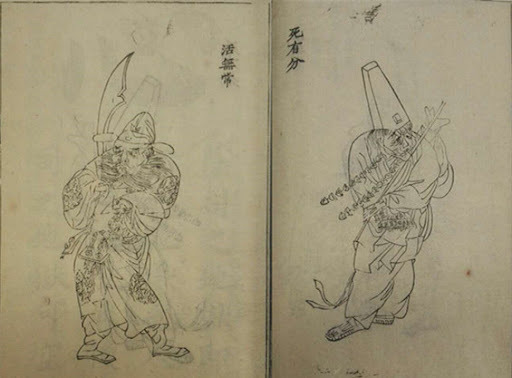
The former wears a black official hat and formal robes, holds brushes and papers in his hands, with blades on his shoulders and torture tools on his belts. He has big bulging eyes and is often laughing.
The latter has dirty, bloodied face, wears a white robe, holds an abacus, carries a sack of rice on his shoulder and has paper money dangling in front of his chest like a necklace. He has a sad frown on his face and is always sighing.
As you can see, there are similarities, but also notable differences from the "iconic" Black & White Impermanences. Whereas the White Impermanence is usually depicted as the cheerful one in white robes, carrying an abacus and wearing strings of paper money, here, he is the sad and grim one.
Their jobs also differ: instead of fetching souls to the Underworld, in the Jade Records, these two are responsible for pushing the dead off the bridges after they have drunken Mengpo's amnesia soup, into the scarlet river so they can reincarnate.
Personally, I view them as a transistory stage between the "Generic Impermanence Ghosts" and "The Two Unique Psychopomps We Know and Love", one strand of the folk god evolutionary process that was captured in written sources.
A Japanese paper goes into another strand in the evolution: the addition of the Black Impermanence. Namely, he might have grown out of a ghost that commonly showed up in City God worship and parades, the so-called "Wall-touching Ghost" (摸壁鬼).
The claim was based on very late Qing newspaper illustrations, where the Black Impermanence was depicted as holding up his two arms like this:
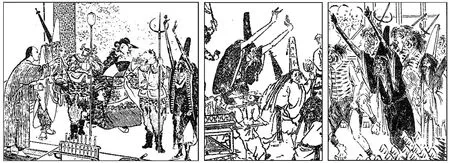
Which was a gesture commonly used by the "Wall-touching Ghost" during parades in the Jiangsu area, who also wore black robes and tall hats.
The author of the paper then dug into sources about the Wall-touching Ghost, and not only found records of the parades, but also a Qianlong era Mulian opera script, 劝善金科, that paired him together with the Impermanence Ghost as fetchers of the dead.

(The two were also given names in this opera: the Impermanence Ghost is named Ba Yang, and the Wall-touching Ghost, Wu Qi.)
Earlier mentions of the Wall-touching Ghost in Qing folklore compendiums, however, didn't depict him as a ghost cop. The story in 夜航船 just described it as a ghost thing that hid between walls and used its chill breath to suck up people's souls.
Another story in the 1878 浇愁集, even though it described the ghost more——dark-faced, holding its arms up like in the drawing, could turn into a cloud of black smoke and disappear into walls——still had it as your typical "ghost shows up, people die" ill omen.
So the paper's proposition is that, after the White Impermanence has separated out of the "Generic Ghost Cop Impermanences" and become his own thing, people in southern Jiangsu built on their existing Wall-touching Ghost and made him into the former's partner, absorbing most of his iconography in the process.
Similarly, the "tall and short" pair-up that was popular in Fujian and spread across Taiwan and SEA might also be a result of parallel local evolution, together with the name Xie Bi'an and Fan Wujiu.
Xie and Fan
Yes! At last, at last, we are getting to the most well-known and popular origin story, a.k.a. the Nantai Bridge Tale.
A summary: Xie Bi'an and Fan Wujiu were a pair of best friends/sworn brothers from Fujian, working as constables for the local magistrate. One day, while they were out on a mission, they saw a storm brewing. Xie went back to grab umbrellas while Fan waited for him under the bridge.
Unfortunately, the downpour soon began, causing the river to flood. Fan, unwilling to break his promise, continued waiting for Xie under the bridge and drowned. When Xie returned and saw his sworn brother's corpse, he hang himself out of guilt and grief too.
(…As a casual reader, I, always wondered why "waiting ON the bridge instead of under it" never crossed his mind as an option. Okay, sure, it was raining. But that's all the more reason to not stand under the darn bridge.)
Touched by their loyalty to each other, the City God/King Yama/Jade Emperor appoints them as ghostly constables, responsible for fetching the dead to the Underworld.
This story bears a lot of similarity to the fable of Wei Sheng in Zhuangzi. Basically, the guy made a promise to meet a girl under a bridge, the girl didn't show up, there was a flood, and, unwilling to leave, he drowned while still clinging to the bridge pillar.
Zhuangzi's opinion of the guy wasn't too high, because honestly, what a stupid way to die.
However, Sima Qian held him up as an exemplar of loyalty and keeping one's word, and the reading stuck. For later folktales about Wei Sheng as well as others that adopted the basic premise, like one tale in the 七世夫妻 story cycle, it also tended to get turned into a straight-up love story.
Though the Nantai Bridge Tale is the most popular version of their backstory, it's far from the only version. One version has them as Tang dynasty officials, working under the historical figure Zhang Xun, who died during the Anshi Rebellion.
While they were trying to get reinforcements, Xie was caught and hung on the city gate by the rebels, while Fan accidentally drowned.
When Zhang Xun was made a City God after the city fell and the rebels killed him, these two also became deified as his attendants.
In another version, Xie was a filial son with an aging mother, who had been wrongly imprisoned because of a friend's crime. During the Lunar New Year, Fan found him crying in the cell, and, upon learning about his sad backstory, released him secretly to visit his mother, on the condition that he returns after seven days.
However, his mother died soon after his return. Busy with her funeral, Xie did not return in time, and Fan, unable to answer to his superiors, committed suicide via drinking poison. When Xie returned and learned of the terrible news, he, too, hang himself.
And these three are far from the only known versions! Like, seriously, there are probably as many variations of the story as there are variations of the objects they held in their hands.
Though some elements stay more constant——using their deaths to explain their iconography, Xie being more commonly associated with the fan, umbrella, and abacus and Fan, chains, everything is subjected to changes and regional differences.
(For example, SEA oral legends tend to associate them with opium. Most of the time, they are constables or mercenaries employed to track down opium smugglers and other criminals, but some have them as Robin Hood-esque opium smugglers.)
Anyways, I hope this long post has offered some insight into the two iconic, yet also somewhat obscure ghost cops. I might add an "Appendix of Fun Facts and Tales" that doesn't fit into the main body of the post, but for now? That will be all.
May the readers who celebrate it have a nice Zhongyuan Festival.
Bibliography:
蔺坤:《无常鬼考源》
大谷亨:《黑无常的诞生与演变—— 以江苏南部的摸壁鬼传说为中心》
陈威伯、施静宜:《七爷八爷成神故事研究》
江義雄:《臺灣「黑白無常」與「范謝將軍」研究》
吳彥鋒:《臺灣七爺八爺傳說及其與信仰關係研究》
中国国家博物馆藏《十一面观音变相》的阐释
劉榕峻:狂放不羈、怪異獨特:談香港藝術館展出的「揚州八怪」
Stephen F. Teiser, The Scripture on the Ten Kings and the Making of Purgatory in Medieval Chinese Buddhism
Fabian Graham, Voices from the Underworld: Chinese Hell Deity Worship in Contemporary Singapore and Malaysia
CBETA: 《地藏王菩萨本愿经》
CBETA:《佛说地藏王菩萨发心因缘十王经》
夷坚志/支癸07,“赵彥珍妻”
《金瓶梅词话》,Chapter 74
《醋葫芦》,Chapter 12
《劝善金科》Vol.5, Part 2
The Jade Guidebook: Appendices, translated by David K. Jordan
Journey to the West Vol.1, Chapter 11, translated by Anthony C. Yu
#chinese folklore#heibai wuchang#fan wujiu#xie bi'an#chinese folk religion#chinese underworld#cw: death#cw: suicide#hell#ghosts#ghost month#hungry ghost festival
131 notes
·
View notes
Text
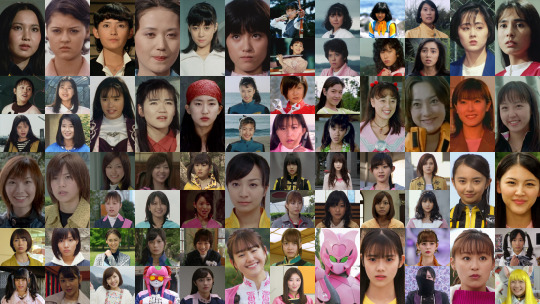
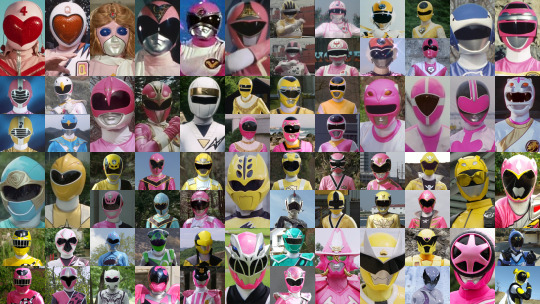
All Super Sentai Female Rangers (Main & Sixth):
Peggy Matsuyama (Momorenger)
Karen Mizuki (Heart Queen)
Maria Nagisa (Miss America II)
Akira Momoi (DenziPink)
Miki Momozono (Goggle Pink)
Rei Tachibana (Dyna Pink)
Jun Yabuki (Yellow Four II) & Hikaru Katsuragi (Pink Five)
Sayaka Nagisa (Change Mermaid) & Mai Tsubasa (Change Phoenix)
Sarah (Yellow Flash) & Lou (Pink Flash)
Haruka (Yellow Mask) & Momoko (Pink Mask)
Megumi Misaki (Blue Dolphin)
Haruna Morikawa (Pink Turbo)
Kazumi Hoshikawa (Five Pink) & Remi Hoshikawa (Five Yellow)
Kaori Rokumeikan (White Swan) & Ako Hayasaka (Blue Swallow)
Mei (PteraRanger)
Lin (HououRanger)
Tsuruhime (Ninja White)
Juri Nijo (OhYellow) & Momo Maruo (OhPink)
Natsumi Shinohara (Yellow Racer) & Yoko Yagami (Pink Racer)
Chisato Jogasaki (MegaYellow) & Miku Imamura (MegaPink)
Saya (GingaPink)
Matsuri Tatsumi (GoPink)
Yuri (Time Pink)
Sae Taiga (GaoWhite)
Nanami Nono (Hurricane Blue)
Ranru Itsuki (AbareYellow)
Marika "Jasmine" Reimon (DekaYellow) & Koume "Umeko" Kodo (DekaPink)
Houka Ozu (MagiPink) & Urara Ozu (MagiBlue)
Lilina/"Natsuki Mamiya" (BoukenYellow) & Sakura Nishihori (BoukenPink)
Ran Uzaki (GekiYellow)
Saki Royama (Go-On Yellow) & Miu Suto (Go-On Silver)
Mako Shiraishi (ShinkenPink) & Kotoha Hanaori (ShinkenYellow)
Eri (GoseiPink) & Moune (GoseiYellow)
Luka Millfy (GokaiYellow) & Ahim de Famille (GokaiPink)
Yoko Usami (Yellow Buster)
Amy Yuzuki (KyoryuPink)
Mio Natsume (ToQ 3) & Kagura Izumi (ToQ 5)
Fuuka Igasaki (ShiroNinger) & Kasumi Momochi (MomoNinger)
Sela (ZyuohShark) & Amu (ZyuohTiger)
Hammie (ChameleonGreen) & Raptor283 (WashiPink)
Umika Hayami (LupinYellow) & Tsukasa Myojin (Patren 3)
Asuna (RyusoulPink)
Sena Hayami (KirameiGreen) & Sayo Oharu (KirameiPink)
Magine (ZenkaiMagine)
Haruka Kito (Oni Sister)
Hymeno Ran (KamakiriOhger) & Rita Kaniska (PapillonOhger)
Mira Shifuto (BoomPink)
Luna Iwashimizu (AkibaBlue II) & Yuko Yamada/"Yumeria Moegi" (AkibaYellow)
#super sentai#power rangers#himitsu sentai gorenger#mashin sentai kiramager#kikai sentai zenkaiger#avataro sentai donbrothers#ohsama sentai king ohger#bakuage sentai boonboomger#hikounin sentai akibaranger
19 notes
·
View notes
Text
I tried something

I wanted to try color pop/pop art for a background, but my original plan didn't work so it ended up like this. I threw in some more stuff to test, like halftones and different hair highlights. I like it
No Text below

#Dyna colors Manga#Dingo colors Manga#Blue Lock#Rin#Itoshi Rin#Blue Lock Rin#Manga Coloring#Blue Lock Spoilers#?#I should have halftoned the face shadow aaa#I'll do that next time there's a face shadow#I threw in my watermark for art up in the corner#It's my mascots fused I like it#Don't know if I'll use it for colorings but I wanted to see
92 notes
·
View notes
Text
Deidre Hall Vs. Phyllis Logan


Propaganda
Deidre Hall - (Electra Woman & Dyna Girl, Days of Our Lives) - No text propaganda
Phyllis Logan - (Lovejoy, Play for Today, And a Nightingale Sang) - Phyllis Logan starred in a number of TV plays on British TV in the 1980s and 1990s but her best known lead role from the era was as Lady Jane Felsham, opposite Ian McShane as Lovejoy an antiques dealer. Her performance in the TV film And a Nightingale Sang as Helen was poignant and moving but Phyllis herself was radiant. Just look those blue eyes and captivating smile!
Master Poll List of the Hot Vintage TV Ladies Bracket
Additional propaganda below the cut
Phyllis Logan:




22 notes
·
View notes
Text
WDYM only Alain can get the killing blow on Baltro???
TFW the Tricorns keep on whacking him to no avail, ditto with Magellan :(
even if plot wise it makes sense
@pandp-author Feathershields are absolutely ridiculous lol, Fodoquir basically exists and makes mage teams/teams where Sorceress try their "surprise you're frozen !" combo completely meaningless !
Sanatio's healing is completely stupid too lol, too bad we can't play more maps with the angels/feathered people, because they're fun to use!
I'll make a more detailed post about the epilogue later but plot wise for the final chapter, as expected, Gharnef Baltro backstabs the Red Emperor, it is revealed Ilenia - Alain's mom - survived in the prologue, but Red Emperor Galerius Galvius when defeated body/soul hopped on hers so she became his unwilling medium (which raises all sorts of questions here, when Alain kills Galvius during the "Rescue Scarlett" mission, did he aleady kill Ilenia and Baltro resurrected her, but she's somehow still alive and not a zombie?) but ultimately she is free when Baltro uses Galvius' soul to open the "gate to the netherworld" or something, to use the souls of the Zenoiran currently in limbo as fuel for his spells.
Given how Baltro notes that the Cornian Royal fam has the blood of the Maiden who survived the sacrifice of the Unicorn and its curse 800 years ago, I guess he implies that is the reason why Ilenia makes for a better host than the random Valmore - the previous human who was Galvius' host - but then it raises the question of Giethe hunting Virginia : wouldn't she have been used as a spare ? Granted, given how Galvius incarnates in the flesh of people who defeat him, the only way to incarnate in Virginia would be for either her or a random to kill Galvius while he's using Ilenia's body (and Virginia would later kill the random).
So I guess if Giethe brought her head Baltro would have been "you dumb fuck", but Alcina's plan to uwu with Gerard in Alain's body wouldn't put a dent in his plans, since he could get rid of Gerard in Alain's body to put Galvius instead if needed.
As cheesy as it was, I liked how the plot unfolded here - despite his "perfect lord" appearances, Alain still wants revenge for his mom and didn't forget what happened 10 years ago : if the player chooses to give Alain his vengeance, despite learning the plot and the truth about Zenoira, he... actually kills his mother, and Baltro is still Baltroing around.
If he acts as the better person and the "saviour", he tries to offer mercy to Galvius, despite him killing his mother and plunging the continent in a sea of blood, which gives Baltro the occasion and opportunity to betray Galvius, thus freeing Ilenia without killing her, and it gives the party the occasion to kill/banish him to oblivion instead.
The usual "follow the plot = you're rewarded + vengeance is meaningless" trope.
Of course I can't talk about the final map without ranting about the green NPCs that are here to "help" you - nice nod to have them be Drakengardians to echo Gilbert's earlier (at the end of arc 2!) words of sending Drakengard's help to help Cornia when it will be needed - sure his help is green units + Hermann (one of his retainer that is blue this playable \o/) but it's a nice nod to the former plot and you can honeypot about the political ramifications of this move (the Liberation Army led by the Cornian prince helped free Drakengard, so now the Drakengard Army will help the Cornian prince to free his country?).
No such lines about the enemy Bestrals - who as Bestrals can't be soul snatched - who are recruited by Dyna who basically tells them "wtf dudes stop fighting with them and join us instead!" but I confess I laughed at their names (il y en a qui s'appelle Paulo mdr, pourquoi pas Bébert pendant qu'on y est?).
Too bad the named minibosses aren't more developped, but I wonder if in the Norbelle aka worst ending we get to fight Reimann and pals instead.
Oh well, I'll have other occasions to replay that map to get the different endings - at least the normal one on this PT (the one where Alain kills Galvius but fights off the possession thanks to his magical plot ring that resonates with the plot ring of his partner).
#unicorn overlord stuff#is it me or Ramona can remove Galvius' blood armor bonus by doing her thing?#She does so against not!Alcina's barrier so I wonder#also Baltro's 3D dead unicorn attack is mag based#so Ramona and people with high mag def can actually withstand it without needing the passive skill from the maiden ring?#which makes it all the more meh than Baltro can only be defeated with Alain and his unicorn ring skill#either plotwise the dead unicorn kills everyone but the team where the person who has the maiden ring uses the special skill#or it doesn't but then Alain's Astral Blade shouldn't be the only way to kill him too#cucumber point for the ludonarrative dissonance here#but it's just nitpicking#also what was the frick of nigel joining by blasting a laser#like dude#stop it you're already awesome
9 notes
·
View notes





